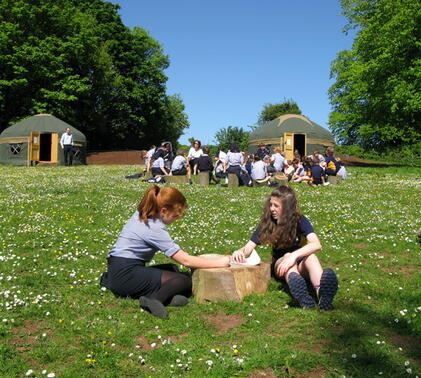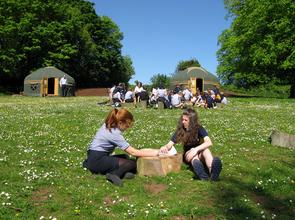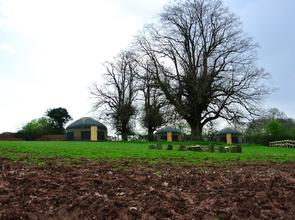
Iain Kilpatrick, Headmaster of Sidcot School in Somerset tells the story of his innovation, based on 3,000-year-old tradition...
"One of the greatest privileges of being head of an independent school is the opportunity to innovate and do so in a spontaneous manner. I remember very clearly walking with a colleague after assembly on a bright autumn morning and discussing how we might be able to take learning outside the classroom. My colleague, Jackie Bagnall, is the director of our Centre for Peace and Global Studies and so immediately started thinking about ways in which we could combine this with the Quaker values on which Sidcot was founded in 1699."
"Before long we came up with the idea of yurts! For those who may not be familiar with them (and are clearly not ‘glampers’) yurts are round tents used by the nomadic peoples of Central Asia for the past three thousand years. And so in a spirit of Kevin Costner’s Fields of Dreams, we set about erecting four in a field close to one of our boarding houses. Sidcot is set in 160 acres of rolling Somerset countryside in the foot of the Mendip Hills and so the yurt village, as we have now named the installation, has breathtaking views both of the hills and valley and is surrounded by horses from our equestrian centre and sheep and cattle that graze the neighbouring fields."
"As well as the yurts, we have built a fire pit and are in the process of constructing a natural outside amphitheatre. The planned outcomes for the yurt village are? Well, there aren’t any. The whole point of the project is to create a space which will be filled by the imagination and innovation of students and staff. Just as Costner’s character heard the words ‘If you build it, he will come’, so the outcomes of the yurt village will be defined by those who use it."
"However, this is more than a vane whim. The principles are underpinned by the concern that teaching is becoming overly reliant on technology. Like most other schools we have interactive whiteboards in every classroom, a wi-fi enabled campus and a virtual learning platform, all of which play a vital part in the day-to-day delivery of our curriculum. Yet we want more for our students: an outdoor, holistic experience that requires them to stop and think about the world around them through a natural prism. One of our school’s values is sustainability, encouraging our students to take an active part in the stewardship of the Earth’s natural resources across generations, which we want to be the lived experience of all our students and not merely words on a page."
"Being round, yurts naturally lend themselves to conversation. There is a real sense of sharing that comes from the flattened hierarchy which encourages dialogue and exploration, quite different from the didactics of the classroom. This has also proved to be true for visitors who we have invited to share their story and hold conversation with our students."
"How will we know if this particular innovation has been successful? We are already seeing the yurt village being put to a range of purposes."
"I took my Year 7 English class to consider what inspires poets to write about nature. Using the countryside as a natural backdrop we read W B Yeats’ ‘Lake Isle of Innisfree’ and ‘Leisure’ by William Henry Davis, the answers become clear and present and inspired students to write nature poems of their own. I have been similarly delighted with the range of other uses that colleagues have put the yurts to: the Junior School are running some of their forest school activities in them, drama and art have been using the space for cross- curricular projects and our boarders have been holding campfires and barbeques at the weekends. In the run-up to exams, many teachers are taking revision classes in the yurts and the open air environment certainly seems to provide a welcome antidote to exam stress for students. We are planning to stage an open air festival, SidFest, at the end of term – well, we are a stone’s throw from Glastonbury after all – and so the possibilities are proving to be endless."
"Our yurt village is very much work in progress and I can scarcely wait to see what activities will have taken place in a year’s time. We realise that we are extremely fortunate to have the space to devote to creating this facility. However, the principle is one that any school can adopt: a yurt can just as easily be a tent or gazebo on the edge of a playing field and a fire pit is little more than a ring of tree trunks cut to the height of stools."
"The essential ingredients are a willingness to take learning out of a formal environment, get muddy and fill your lungs with fresh air!"
Source: Independent Schools Magazine




